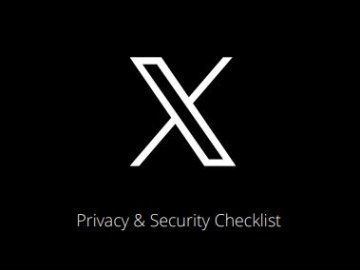If you are one of the schools already using 360 safe Scotland online safety self-review tool, there are probably a few questions you have regarding the new and improved version. Here we go through the most commonly asked questions and explain how 360 safe Scotland has improved.
What is new?
- To log-in you will now use your email address (as saved in the tool) as your username.
- There are now 20 aspects instead of 25, making the content more focussed and simpler to use. Please see the diagram at the end of the article to see how aspects are structured in the new tool.
- The level statements and improvement actions have all been updated to reflect changes in technology, behaviours, legislation and statutory guidance.
- The Online Safety Mark benchmark level has been increased from level 3 to level 2 in four aspects (Technical Security; Professional Learning; Community and Stakeholder Engagement; Cyber and Information Security; and Outcomes/Impact). This ensures that the benchmark level is consistent across the tool.
What has happened to your data in the ‘old’ tool?
- Your chosen levels and commentary have been transferred from the nearest equivalent aspect in the old tool to the new aspect in the new tool. Please see the table later in the article to see how aspects have been merged and data migrated.
- The only exceptions to this are the new aspects:
- Monitoring - here the chosen level has been copied from the old Filtering and Monitoring aspect, but not the commentary.
- Community and Stakeholder Engagement – a new aspect for which you will need to add a level and a commentary
- To check how your data has been migrated in each aspect, please click on the orange bar at the top of each aspect review page which states: “This aspect has been updated since you last reviewed it. Review the changes here.” This will explain how the data in the new aspect has been transferred and whether there is a change to the benchmark level.
Can I still see my old data?
- Yes, you can print your “Detailed Summary Review” from the Reports section of the tool and you can select a historical date for the report.
Will it be harder to reach the new benchmark levels?
- Generally, no, the new benchmark level should be no harder to reach as we have adjusted the level statements to keep the requirements similar.
What should existing users do next?
- Now is the time for you to update your review so that you can check your online safety policy and provision meets the latest guidance and good practice.
- Carefully check the level statements to ensure that the level you have chosen previously is still relevant.
- Read the improvement actions to see what you might include in your action plans to move to the next level in each aspect and prioritise these.
- Download the new Online Safety Policy Templates to check that your policies are still relevant and meet latest guidance.
- If you are considering an application for an Online Safety Mark assessment or re-assessment check that you meet the new benchmark levels and that your commentary describes clearly how your provision matches the benchmark level statement.
Can schools apply for the Online Safety Mark?
- Yes, applications are very welcome from schools that meet the required benchmark levels
- If you are applying for the first time, you need to check that in your review you meet the new benchmark levels and that your commentary describes clearly how your provision matches the benchmark level statement. You will then need to apply using the online form on the Online Safety Mark page in the tool.
- If you are due to be re-assessed (after three years) you are encouraged to update your review in the new tool and apply on the application form for re-assessment (which can be found on the Accreditation/Online Safety Mark page in the tool).
How has the old data been migrated to the aspects in the new tool?
Details of the merging of aspects in the updated 360 safe Scotland tool | ||||
Existing Element | Existing Strand | Existing Aspects | New Aspects | |
Policy & Leadership | Responsibilities | Online Safety Group | Online Safety Group | |
Online Safety responsibilities | Online Safety responsibilities | |||
Policies | Acceptable use | Acceptable use | ||
Policy development | Online safety policy | |||
Policy scope | ||||
Whole school | ||||
Reporting | Reporting and responding | |||
Developing a culture of safe and responsible use | ||||
Self Evaluation | ||||
Communications & communications technologies | Digital & video images | Digital & video images | ||
Social media | Social media | |||
Mobile technology | Mobile technology | |||
Professional standards | Professional standards | |||
Public online communications | Online publishing | |||
Infrastructure | Passwords | Password security | Technical security | |
Services | Technical security | |||
Filtering and monitoring | Filtering | |||
Monitoring | ||||
Data Protection | Cyber and Information Security | |||
Education | Learners | Digital literacy | Online safety education programme | |
Online safety education | ||||
Contribution of learners | Contribution of learners | |||
Staff | Professional Learning | Professional Learning | ||
Parents & carers | Parental engagement | Parents and Carers | ||
Community | Community and Stakeholder Engagement | |||
Standards & inspection | Monitoring | Monitoring and recording of OS incidents | Impact of the online safety policy & practice | |
Impact of the online safety policy & practice | ||||






